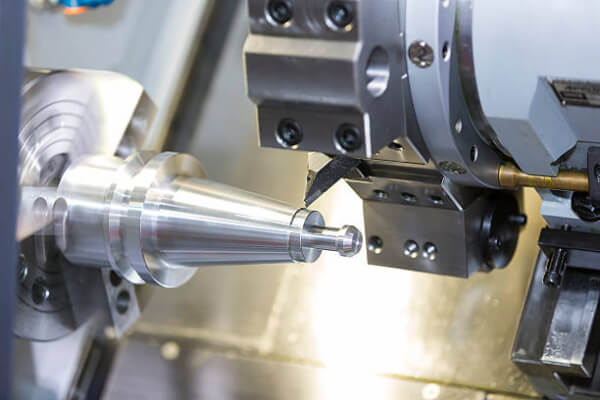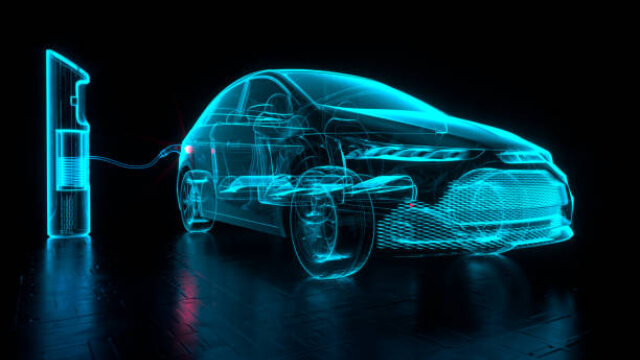
Computer Numerically Controlled (CNC) machining produces many complex parts required by a wide range of industries. While mass production works for some applications, many industries require custom parts. Many companies seek CNC machining for their operations so that they can follow exact designs and produce precise parts using computer software. Several industries, from medical to transportation, rely on machined parts.
CNC machining uses computer software to guide machines to turn a virtual design into a concrete, three-dimensional product. The process is a form of subtractive manufacturing. This means that projects start with a block of material that machines cut away to create the intended design. Computer programming supports the entire process, helping experts to create products with extreme design accuracy.
A CNC project begins with the creation of a design using computer-aided design (CAD) software. Designers can create virtually any object using 3D software, but they must take into account any material specifications or limitations of the CNC machine, or they risk producing a part that doesn’t match the design. For example, machines cannot replicate curved cuts, and stiff materials may not produce the expected appearance.
A programmer converts the design into a format that the computer of the CNC machine can read. Machinists place the selected material in the machine and make sure the CNC machine has the right tools for the job. Finally, the CNC program tells the machine to make the product based on the design.
The computers do much of the manufacturing themselves. However, machinists often still play a role in the process. For especially complex designs or different types of machine, operators may need to stop and turn some parts occasionally. Machining may also be just the first step, before finishing operations are carried out by hand.
Precision matters most in life-or-death situations such as those encountered in the defence, aerospace, petrochemical and military industries. Companies in these sectors demand the highest levels of accuracy in their parts, as component failure can put lives at risk. CNC machining can achieve the levels of precision required to save lives when it counts.
The medical sector relies on customised, high-quality products to meet the different needs of patients. However, the industry also uses a lot of disposable equipment. This is to protect patients from contracting infections or diseases while receiving medical care. Medical companies need large quantities of precise parts to meet their patients’ needs and keep their facilities stocked with the essentials. Occasionally, companies may request prototypes before going into full production, especially when testing new ideas. Prototypes are critical in the medical field because professionals need to ensure that products work well before they are used on patients.
Equipment used in the aerospace industry is exposed to a wide range of conditions, including high speeds, fast air currents and extreme air pressures. To prevent damage to the aircraft, engineers must build each component with the most precise tools and parts. Even a small error could be caught in an airstream, creating drag or increasing wear on parts.
Aerospace CNC machining must meet incredibly precise requirements, such as tolerances as tight as 0.00004 inches. Machinists must achieve such tolerances with the industry’s most durable materials, such as titanium, aluminium, nickel and some plastics. The exact materials depend on the parts being produced and the properties required for the CNC component.
Many aerospace components, such as engines, can also be used in the transport industry. Product research and testing, which affects people’s safety and ability to travel, is just as important in the transport sector as it is in the aerospace industry. Vehicle designers must test physical prototypes to know how to modify their original designs and models for better results. CNC machining allows engineers to prototype, test practicality and ultimately design to the exact specifications required.

While the aerospace industry demands vehicles built to travel faster than the speed of sound, the transport sector demands durability. Transport vehicles need robust components that are strong enough to carry heavy loads over long distances.

While machining can produce large parts, it is also an excellent option for designing small components, such as those used in the electronics industry. Modern technological advances rely on small, lightweight parts and devices with laser-precise proportions of less than 10 microns, all of which CNC machining can provide.
In addition to common electrical device components, the electronics industry also needs the ability to create communication components. Communication components can protect communication devices from interference from other electronics.
The marine industry owes its success to the variety of CNC machined components it uses. Many elements of watercraft require unusual materials or shapes, and machining is the perfect method of meeting these needs with minimal effort.
Unlike other industries, the marine industry requires a high degree of water resistance from its products, as most components are either directly exposed to water or exposed to the humidity of oceans, lakes and rivers, which can wear out parts. Most electronics don’t work well in damp or wet environments. However, marine products rely on waterproof electrical components. Marine electronics require special considerations, such as enclosures that prevent water from interfering with electrical processes. In addition, parts used in or near the ocean must be corrosion resistant, as salt water can easily erode the wrong materials.
Marine applications also require a high degree of portability and durability. Components must be able to withstand long periods of wear and damage, as ships at sea may have to wait long periods of time before returning to shore for repairs. CNC machining can help produce durable parts by making them to exact design specifications so that they fit tightly and work well together without fail.